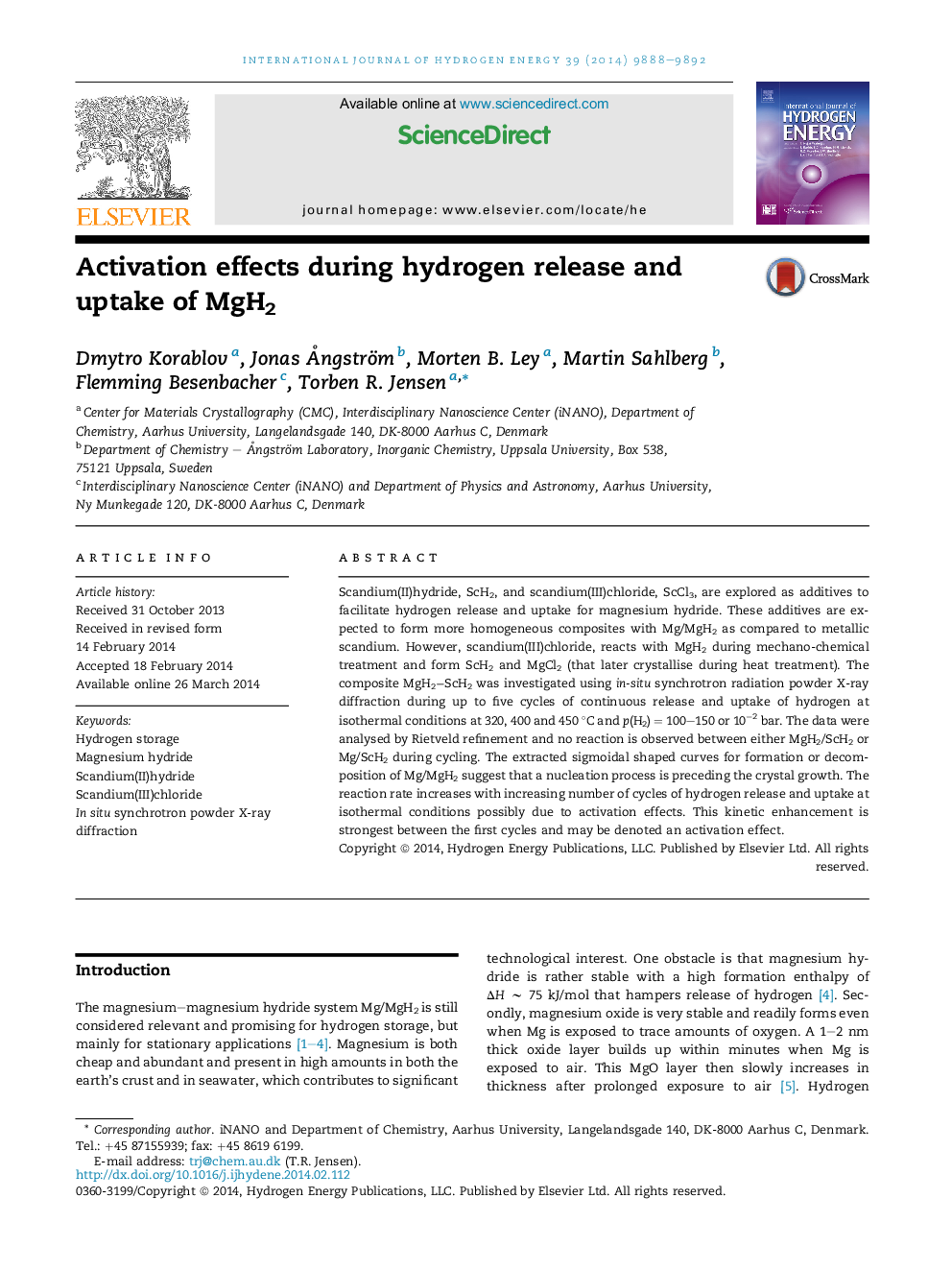| Article ID | Journal | Published Year | Pages | File Type |
|---|---|---|---|---|
| 7719314 | International Journal of Hydrogen Energy | 2014 | 5 Pages |
Abstract
Scandium(II)hydride, ScH2, and scandium(III)chloride, ScCl3, are explored as additives to facilitate hydrogen release and uptake for magnesium hydride. These additives are expected to form more homogeneous composites with Mg/MgH2 as compared to metallic scandium. However, scandium(III)chloride, reacts with MgH2 during mechano-chemical treatment and form ScH2 and MgCl2 (that later crystallise during heat treatment). The composite MgH2âScH2 was investigated using in-situ synchrotron radiation powder X-ray diffraction during up to five cycles of continuous release and uptake of hydrogen at isothermal conditions at 320, 400 and 450 °C and p(H2) = 100-150 or 10â2 bar. The data were analysed by Rietveld refinement and no reaction is observed between either MgH2/ScH2 or Mg/ScH2 during cycling. The extracted sigmoidal shaped curves for formation or decomposition of Mg/MgH2 suggest that a nucleation process is preceding the crystal growth. The reaction rate increases with increasing number of cycles of hydrogen release and uptake at isothermal conditions possibly due to activation effects. This kinetic enhancement is strongest between the first cycles and may be denoted an activation effect.
Keywords
Related Topics
Physical Sciences and Engineering
Chemistry
Electrochemistry
Authors
Dmytro Korablov, Jonas Ã
ngström, Morten B. Ley, Martin Sahlberg, Flemming Besenbacher, Torben R. Jensen,
